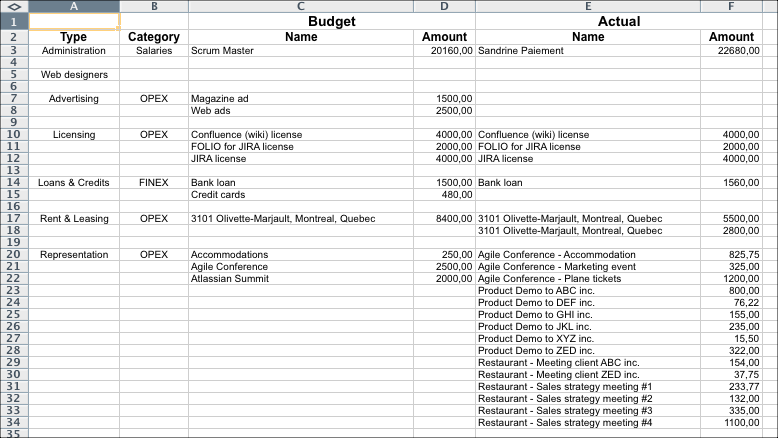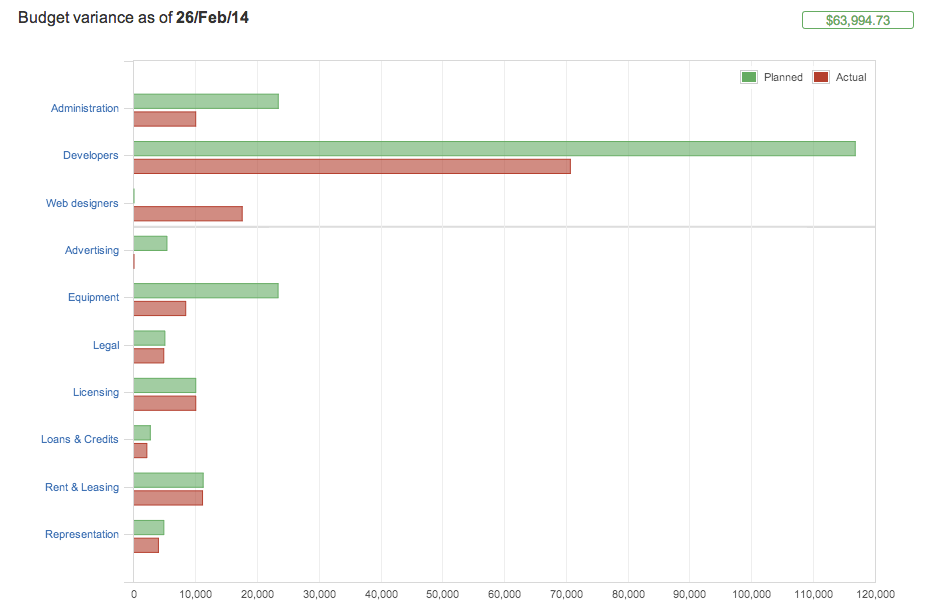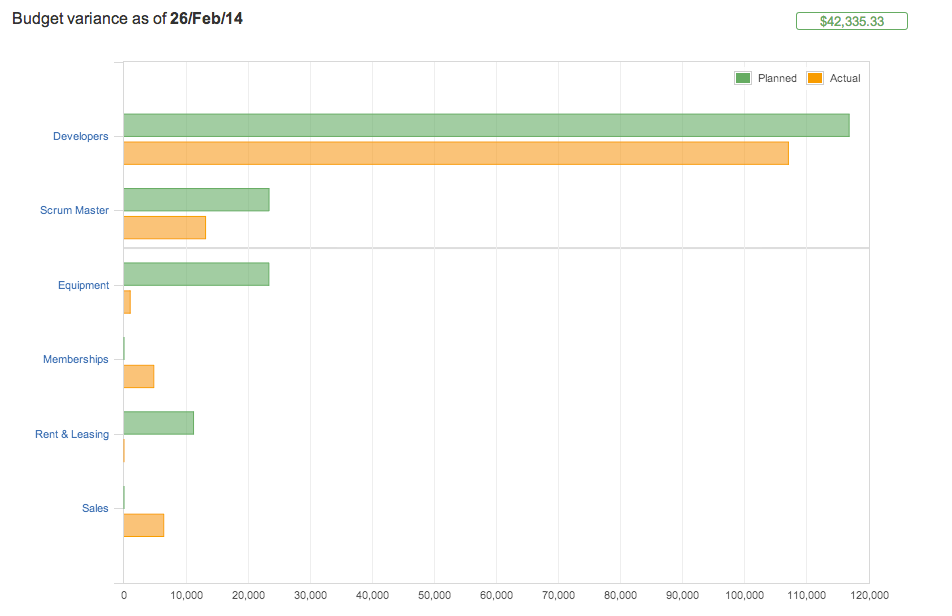The Budget Variance report presents the planned costs versus actual costs variance OR planned revenues versus actual revenues variance at a given date, broke down by the staff members roles and expense types you defined. To access this report, click on the Report tab or hit the tab number ('5') and then click on the 'View report' button next to the Budget Variance report preview. This will bring up the report with today's date and all expense types and roles selected as default. The report will be automatically refreshed when one of its parameters changes.
The report first presents a bar chart showing two bars for each selected expense types and roles: the green bar indicating the planned amount(costs or revenues) at specified date, another bar indicating actual amount(red for costs, yellow for revenues). Hovering the bars will open a tooltip showing the precise amounts. The labels on y-axis can be clicked to navigate to the detailed expense information for that expense type.
|
|
|
|---|---|
|
Costs Variance |
Revenues Variance |
Detailed information for all expense (or revenue) types and roles follow the chart. Each of these sections shows the list of expenses (or revenues), ordered alphabetically and grouped by category (OPEX, CAPEX or FINEX). The variance appears in a lozenge in the heading on the right. A green lozenge indicates a positive variance (planned ≥ actual) and a red lozenge indicates negative variance.
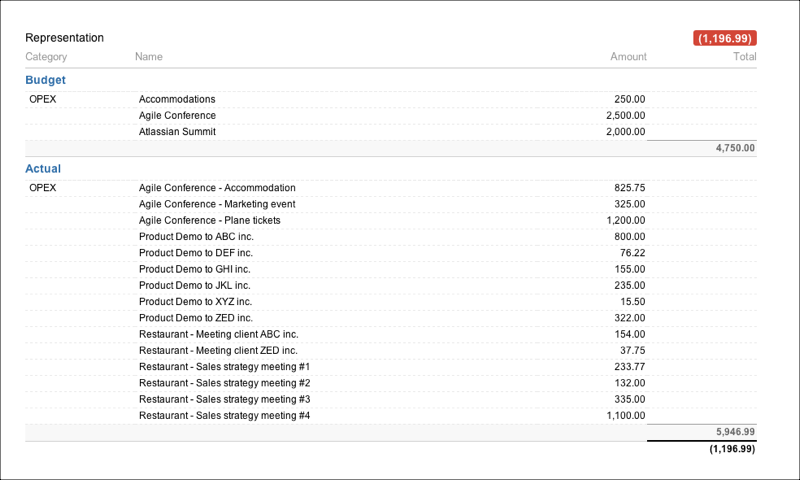
Detailed budget heading variance section
Configuring the report
You can display budget variance for costs or budget variance for revenues simply select Costs or Revenues option form the 'For' field.
To change the date for which to get the variance, simply change the date in the 'Date' field. The expenses considered are the ones occurring between the start date of the folio and the one specified in the date field. The user can also limit the expenses (or revenues) considered to a certain number of types and/or roles or even for a specific label. Simply select/deselect the types you are interested in and the report will be instantly refreshed to reflect the new selection. Selecting or deselecting a category will cause the list of available types and roles to be updated accordingly.

Budget Variance report parameters
|
For |
This parameter allows you to produce EVM report based on Costs or Revenues |
|---|---|
|
From |
Start of the time frame for that report.
|
|
To |
End of the time frame for that report. Notes:
|
|
Account |
This allows you to display amounts of all expenses/revenues and worklogs of issues link to the selected account . |
|
Label |
This allows you to display amounts for the selected Jira Issue Label. (not available at the portfolio level)
|
|
Custom fields |
All custom fields of the type SELECT and TEXT will be added as parameters. The options will be based on the values used by the folio items.
|
|
Categories |
Categories to be included in the report |
|
Roles |
Roles to be included in the report |
|
Types |
Expense or revenue types to be included in the report |
Printing the report
Selecting the "Printable" item in the report's action menu found at the top right of the report's parameters panel to get a printer-friendly version of the report.
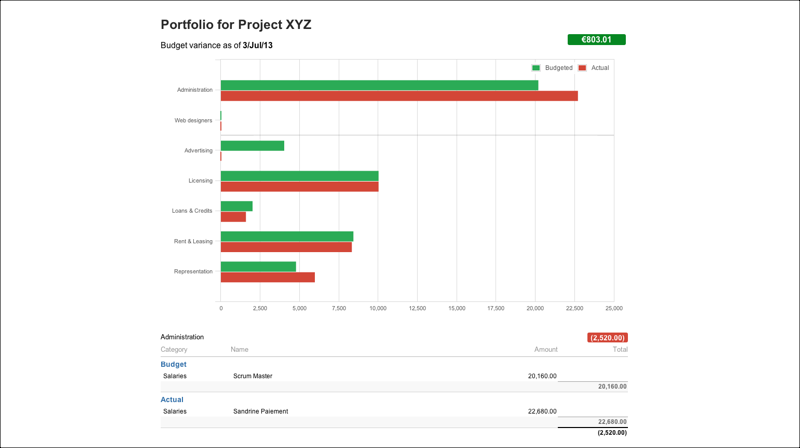
Printable version of the report
Exporting to Excel
The Budget Variance report can be exported to Excel format to give you all the latitude you need to further digest, analyze or graph the data. Do it by selecting the "Export to Excel" item in the report's action menu found at the top right of the report's parameters panel. The parameters that were used to generate the report can be found on the second tab of the generated spreadsheet
